Scientists unveil new 3-D view of galaxies
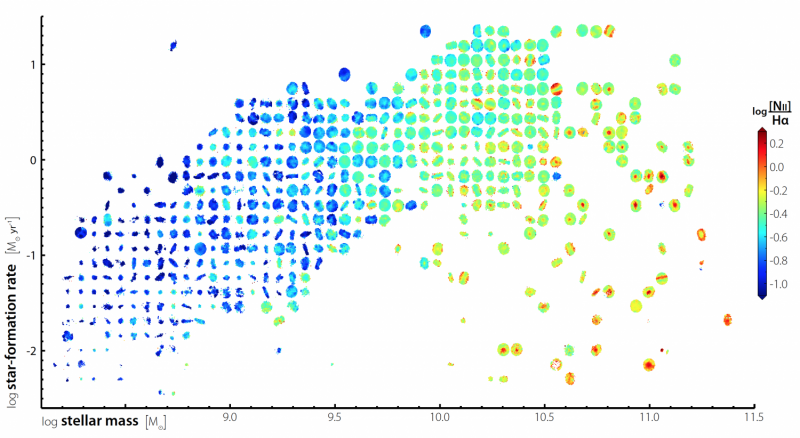
For many years astronomers have struggled to get good-quality 3-D data of galaxies. Although this technique is very powerful as it allows researchers to "dissect" objects, this was a slow process as each galaxy had to be observed independently.
Novel Australian designed and built instrumentation called the "Sydney-AAO Multi-object Integral-field" (SAMI) unit at the 3.9m Anglo-Australian Telescope (AAT) now allows astronomers to simultaneously view many galaxies at the same time.
"The power of SAMI is that it allows us to look into the details of many galaxies at once", University of Sydney astronomer and SAMI Principal Investigator Prof. Scott Croom said.
The SAMI instrument provides 13 optical fibre units that can "dissect" astronomical objects using spectroscopy, providing unique 3-D data of galaxies.
"The new technology in SAMI called 'hexabundles' allows us to see galaxies in 3-D. Through these 3-D 'glasses' we can not only see what each of the thousands of galaxies looks like, but also see in detail how their gas and stars move", University of Sydney and Australian Astronomical Observatory senior research fellow. Dr Julia Bryant said.
The SAMI team has now released to the astronomical community the hiqh-quality 3-D data of 772 galaxies (the "SAMI Data Release 1", DR1). This is around 20% of the full galaxy sample (around 3600 galaxies) that will be obtained with the SAMI instrument at the AAT.
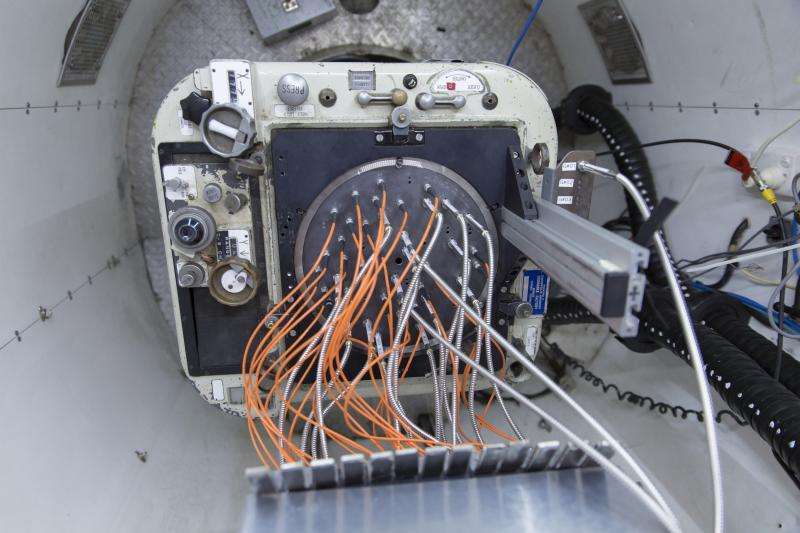
"Only with very large 3-D galaxy samples can the processes that drive galaxy formation be isolated and understood", Dr Julia Bryant said.
"SAMI is uncovering the many and varied formation pathways of galaxies, including when and where in a galaxy star formation is happening", Prof Scott Croom said.
The SAMI data are available online through the Australian Astronomical Observatory's new Data Central archive system. "We are very pleased to have the SAMI Survey 1st Data Release launch through Data Central", Australian Astronomical Observatory astronomer Dr Simon O'Toole said.
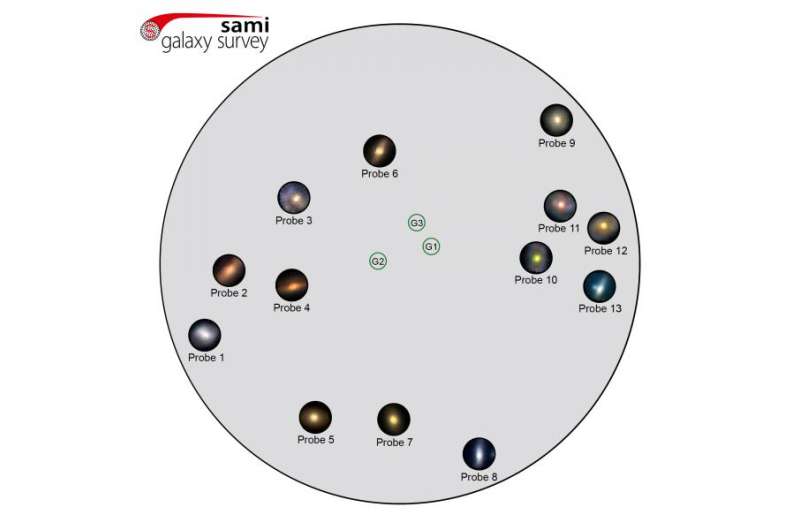
"This is a new kind of astronomical data centre, which recognises that survey data is more than just catalogues. It will bring together all optical and infrared astronomical data into one place, allowing for cross-matching and other analyses to take place."
"With SAMI DR1, we are opening the flood gates for all researchers to have access to this powerful scientific dataset", Dr Bryant emphasised.
"SAMI data will answer questions such as 'How does a galaxy's environment help or hinder its growth in mass and formation of stars, and make it into the shape we see today?'
-
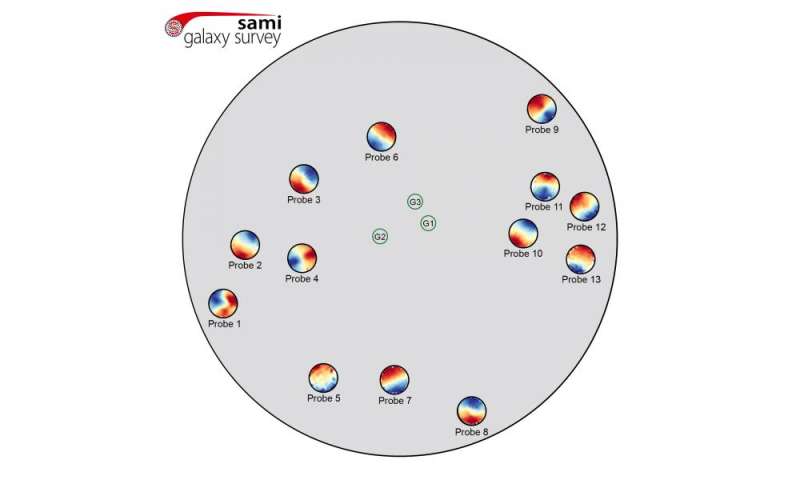
Same figure as before, showing the position of the same 13 galaxies observed with SAMI at the AAT, but now the colour maps show how the gas is moving, where the red parts are gas moving away from us, and the blue parts are gas moving towards us. Credit: Ángel R. López-Sánchez, Jesse van de Sande, Andrew Green and the SAMI team -
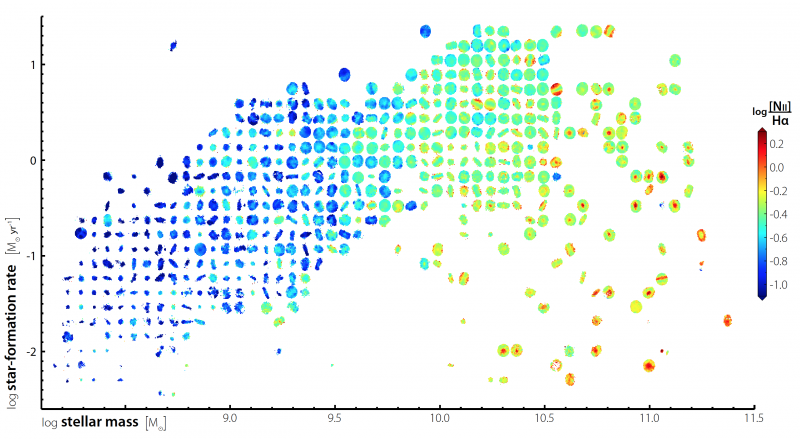
his figure shows some of the galaxies included in SAMI DR1 for which diffuse gas is detected. The galaxies are arrayed by stellar mass (horizontal axis) and star-formation activity (vertical axis). For each galaxy, a color-coded map shows the ratio between the bright emission lines H-alpha and [N II], which allows astronomers to distinguish star-forming activity (blue, green, yellow) from other processes, such as the effects induced by a super-massive black hole (red). Credit: Jesse van de Sande, Andrew Green and the SAMI team
More information: "The SAMI Galaxy Survey: Data Release One with emission-line physics value-added products", arXiv:1707.08402 [astro-ph.GA] arxiv.org/abs/1707.08402
Provided by AAO



















